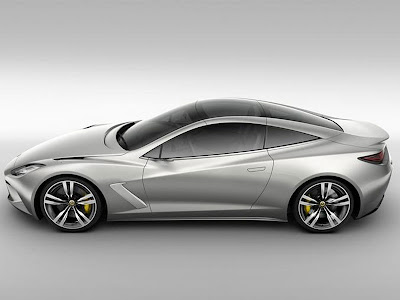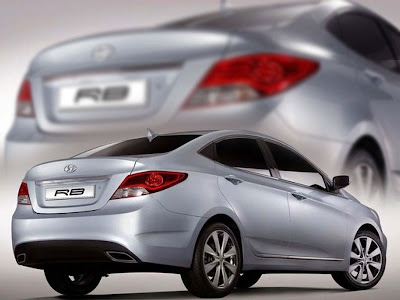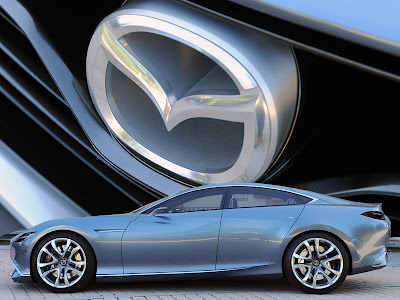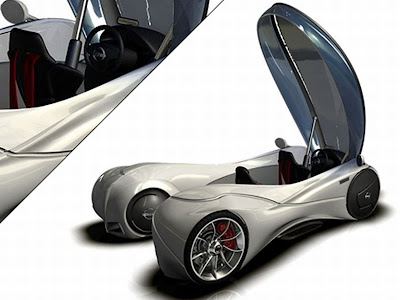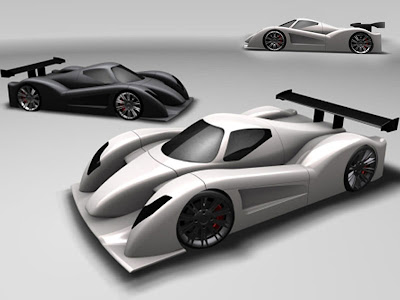 Mazda
Mazda Motor Corporation today announced Mazda's new design theme, 'KODO - Soul of Motion', and revealed the
Mazda Shinari concept car, the first vehicle to embody this new theme. Mazda Shinari is a four-door, four-seater,
sports cars coupe and a pure expression of the new
design theme in its idealised form. Mazda Shinari showcases several new design elements that will carry forward into production, and represents the first initiative by Mazda Design to express 'KODO - Soul of Motion'. The Japanese word shinari describes the powerful yet supple appearance of great resilient force when objects of high tensile strength, such as steel or bamboo, are twisted or bent. It also refers to the appearance of a person or animal as it flexes its muscles in preparation for a fast movement, and it is these images that form the basis for the name of this
concept car.2010 Shinari Concept Car Mazda Sport Cars Coupe
The creation of the
2010 Shinari Concept starts with
Ikuo Maeda, Mazda's global head of design. Maeda was the chief designer of the RX-8 and the Mazda2 and has been with the company for nearly 30 years, but his connection with the brand goes back even further than that. His father, Matasaburo Maeda, headed the design of the first generation RX-7 back in the 1970s. Mazda runs in the Maeda family's blood and there's no one more qualified to define the look of Mazda's next generation vehicles.
The development of the Shinari Concept Cars was actually a collaboration between three of Mazda’s design centers in Japan, Germany and the United States. Mazda also said it is working to improve the quality level of its interiors for future vehicles. With Mazda Shinari Concept as the first step, Ikuo Maeda, general manager of Mazda's design division, aims to create original Mazda designs that will be recognized around the world. He summarizes his resolve in the following words:
"My goal is to create designs that people can point to proudly and say, 'This is a Mazda design'. There is no need for Mazda to build
cars for people who are only concerned with 'style' and 'trends'. Whether working on sports cars or compact cars, I have always worked to create designs that evoke an emotional response in people and I hope to keep doing the same as I remain fully committed to develop designs for people who love and admire cars. It is my personal belief that the only way to create designs that fundamentally connect with people and to create designs they love, is if the people creating them are absolutely passionate about cars and are willing to make that passion a firm policy for design expression.
The Mazda Shinari is a pure
design concept model of a four-door, four-seater sport cars coupe which perfectly expresses the '
KODO - Soul of Motion' design theme in a graceful and carefree form. All of Mazda Shinari Concept's body surfaces appear as if constantly undergoing transformation. There is no static shape to be found, as if the car is in perpetual motion. For instance the subtle control of the angle of the upper surface of the side sill, from the front to the rear, results in a form that suggests a flash of speed along the body of the car. Aerodynamic performance was a major priority for Mazda Shinari Concept, and the centre of the lower sections - on both the front and rear bumpers - are designed to optimize the flow of air along the underbody of the car.

The principle of 'dedicated driving ergonomics' is further reflected in the car's next generation Human Machine Interface (HMI). The availability of smaller electronic components has allowed Mazda Shinari Concept's designers to create a floating HMI three-dimensional display; a design element that represents the very latest HMI technology . The system offers three distinct modes: 'Business, Pleasure and Sport'.
Yasushi Nakamuta, the chief designer who led the design of the
third generation Mazda MX-5, was the first to begin the ideation of the
2010 Shinari Concept Car Mazda Sport Cars Coupe: "The challenge for us was to create an innovative new expression for energetic and powerful movement; something that we had never attempted before. We began by developing the design around the image of a predator, as it strikes at its prey, or the stabbing movement in kendo, Japanese fencing, to express the instant where accumulated force is released.
2010 Shinari Concept Car Mazda Sport Cars Coupe
Ikuo Maeda say, "Further, I consider it vitally important to have an awareness of Japanese originality in designing cars for Mazda. This is not merely about incorporating traditional Japanese elements into car design. I believe in reflecting the Japanese spirit in car designs as part of a subconscious practice. So, while I consider where this may lead in the future, my plan is to create cars that will be instantly recognizable as a Mazda, even when viewed at a distance. My ultimate goal is to create a brand presence that car lovers around the world recognize as representing both Mazda originality and Japanese originality.
Future Mazda's will move people physically and emotionally - this is 'KODO - Soul of Motion'."
 Citroën is poised to reveal an all new environmentally-efficient concept car at the upcoming Paris motor show. With the intention to bring the fashion flair to the Paris Motor show, Citron has tied up with the French fashion house Lacoste to create a funky looking city car concept, Citroën Lacoste. The new concept car is a small buggy that Citroën claims is “stylishly minimalist and elegantly laid back”. Designed as an emblem for a state-of-mind and a lifestyle, according to Citroen, the concept is devoid of a roof alluding to freedom, leisure and pleasure.
Citroën is poised to reveal an all new environmentally-efficient concept car at the upcoming Paris motor show. With the intention to bring the fashion flair to the Paris Motor show, Citron has tied up with the French fashion house Lacoste to create a funky looking city car concept, Citroën Lacoste. The new concept car is a small buggy that Citroën claims is “stylishly minimalist and elegantly laid back”. Designed as an emblem for a state-of-mind and a lifestyle, according to Citroen, the concept is devoid of a roof alluding to freedom, leisure and pleasure. At the crossroads of motoring, fashion and sport, the Citroën Lacoste concept car is a “shared vision of boldness, creativity and optimism” between the French brands, according to the pre-Paris press release. At first glance, the 2010 New Citroen Lacoste Concept Cars appears to be a very optimistic car indeed, as it doesn't have a roof to mitigate the inevitability of a bleak French winter.
At the crossroads of motoring, fashion and sport, the Citroën Lacoste concept car is a “shared vision of boldness, creativity and optimism” between the French brands, according to the pre-Paris press release. At first glance, the 2010 New Citroen Lacoste Concept Cars appears to be a very optimistic car indeed, as it doesn't have a roof to mitigate the inevitability of a bleak French winter.







